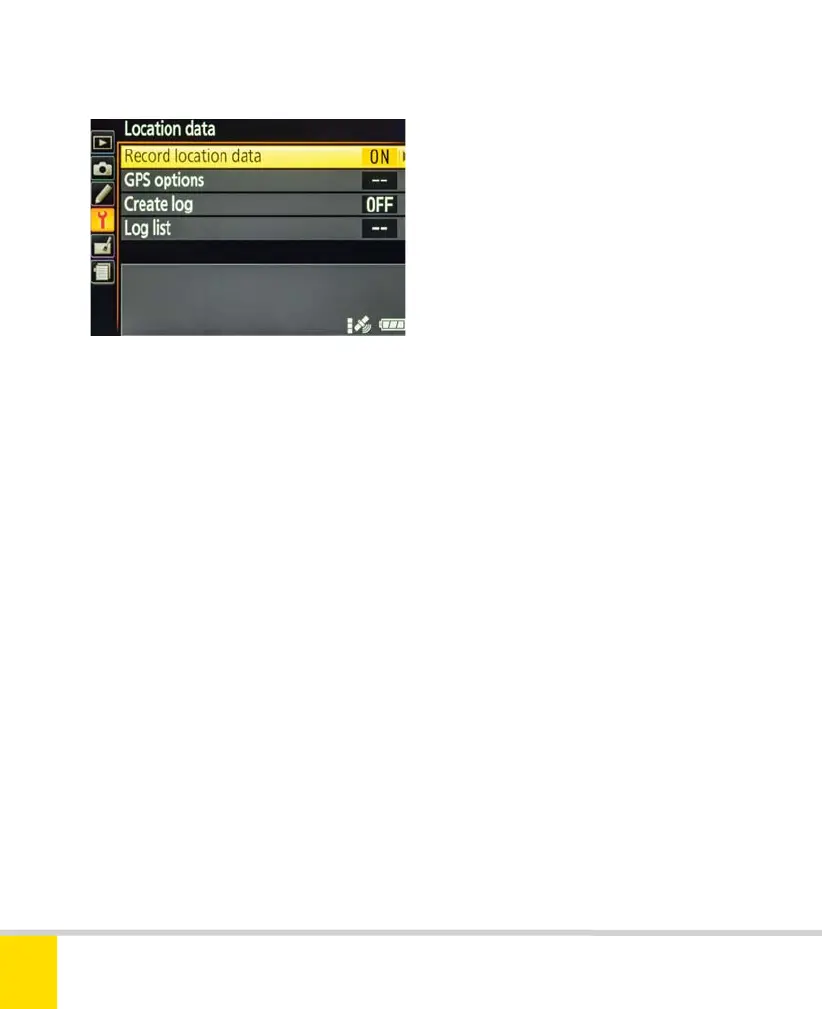Free ebooks ==> www.ebook777.com
blocked). If you select On, the meters will
turn off after 1 minute. This saves battery
power, but next time you take a picture
the GPS receiver may not have time to
get a fix, in which case no location data
will be recorded.
There’s also an option to Set clock
from satellite. As the GPS network
embodies some of the most accurate
timing in existence, this should mean that
your camera clock is always bang on.
Another option is Update A-GPS data.
Assisted GPS (A-GPS) files can help the
receiver acquire a location fix more
quickly. This is worth considering if you are
a serious GPS user, but A-GPS files are
time-limited and need to be renewed
every couple of weeks, so you might
conclude that it’s more trouble than
it’s worth.
Finally, there’s an option to Create log,
which lets the camera record its position
regularly, giving you a record of your
movements while using the camera.
However, bear in mind that this is another
drain on the battery.
»
GPS
The D5300 is the first Nikon DSLR with
onboard GPS. This function is becoming
common on compact cameras and is
almost a given with smartphones, but still
relatively rare in DSLRs. The attractions of
being able to record the location where
every photo was taken will be obvious to
many users, but using the GPS does have
an impact on battery life. This could be
a particular issue when travelling or
trekking—but of course these are just the
times when recording GPS location data
could be most valuable.
The GPS receiver is Off by default—
enable it via the Location data item in the
Setup menu. This item also contains a few
important options.
Standby timer is important in relation
to battery life. If set to OFF, it stops the
meters turning off and returning the
camera to standby. This ensures that the
GPS receiver is always able to connect to
the satellite network (unless the signal is
230
NIKON D5300
9
Nikon D5300 Ch9 220-237 P2 RY.indd 230Nikon D5300 Ch9 220-237 P2 RY.indd 230 20/02/2014 14:2720/02/2014 14:27

